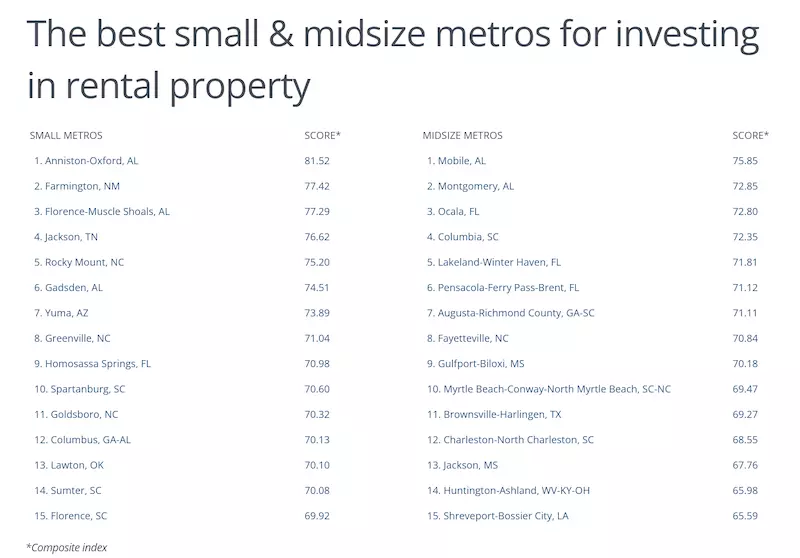The real estate market has been booming in recent years, with home prices skyrocketing and investors enjoying substantial returns on their investments. As home prices continue to rise, some investors are turning to rental properties as a potential source of income. While institutional investors have dominated this market, there are opportunities for small-scale investors as well. However, it's crucial to carefully evaluate how fluctuations in real estate values can impact your investment in both the short and long term.
The Importance of Assessing Property Value Growth
Home prices have shown volatility over time, especially when compared to rents. Although prices rose rapidly during the real estate bubble of the early to mid-2000s, they subsequently plummeted during the bubble burst. After an uneven recovery, prices began surging again in 2020. In contrast, rents have maintained steady growth, ranging between 2 and 5 percent each year, with some exceptions during economic downturns.
The stability of rents, in comparison to the rapid rise in home prices, significantly influences the assessment of potential real estate investments. As sale prices increase, the initial investment and ongoing costs also rise, potentially limiting cash flow if rents fail to keep up. However, rapid appreciation in home values can contribute to a higher overall return when the property is eventually sold.
 Image: The Best U.S. Cities to Invest in a Rental Property
Image: The Best U.S. Cities to Invest in a Rental Property
One essential calculation for investors is the gross rent multiplier, which measures the rental income's ability to recover the property's cost. As home prices increase, the multiplier also rises. Additionally, higher home prices lead to larger annual property tax burdens, reducing cash flow. However, property tax rates vary across locations, with many areas having effective rates below 1%.
Considering these factors, it becomes crucial for real estate investors to identify locations with a low gross rent multiplier, low property taxes, and a positive outlook for future property value growth. The Southern states in the U.S. offer some of the best conditions due to their lower housing prices, lower property taxes, and rapid growth.
The Top U.S. Cities for Rental Property Investment
To determine the best locations for buying a rental property, our researchers developed a composite index based on five key factors: gross rent multiplier, recent and forecasted home price growth, effective property tax rates, and population growth. The analysis incorporated data from the U.S. Census Bureau, Zillow, and the Department of Housing and Urban Development. Only locations with at least 100,000 residents and complete data from all sources were included.
Here are the top U.S. metropolitan areas for investing in a rental property:
15. Nashville-Davidson-Murfreesboro-Franklin, TN
- Composite index: 53.27
- Gross rent multiplier: 21.4
- Median monthly rent: $1,422
- Median home price: $365,573
- Year-over-year change in home price: +20.9%
- Forecasted home price growth: +19.0%
- Effective property tax rate: 0.56%
- Year-over-year change in population: +1.4%
14. Miami-Fort Lauderdale-Pompano Beach, FL
- Composite index: 53.81
- Gross rent multiplier: 17.4
- Median monthly rent: $1,798
- Median home price: $375,082
- Year-over-year change in home price: +18.2%
- Forecasted home price growth: +20.6%
- Effective property tax rate: 0.92%
- Year-over-year change in population: +0.1%
13. Charlotte-Concord-Gastonia, NC-SC
- Composite index: 54.74
- Gross rent multiplier: 20.3
- Median monthly rent: $1,306
- Median home price: $317,876
- Year-over-year change in home price: +23.8%
- Forecasted home price growth: +23.0%
- Effective property tax rate: 0.77%
- Year-over-year change in population: +1.7%
12. Las Vegas-Henderson-Paradise, NV
- Composite index: 55.19
- Gross rent multiplier: 21.2
- Median monthly rent: $1,488
- Median home price: $378,476
- Year-over-year change in home price: +24.1%
- Forecasted home price growth: +18.5%
- Effective property tax rate: 0.58%
- Year-over-year change in population: +1.8%
11. San Antonio-New Braunfels, TX
- Composite index: 55.41
- Gross rent multiplier: 16.6
- Median monthly rent: $1,308
- Median home price: $260,466
- Year-over-year change in home price: +19.3%
- Forecasted home price growth: +17.6%
- Effective property tax rate: 1.62%
- Year-over-year change in population: +1.6%
 Image: Rental Property Investment
Image: Rental Property Investment
These cities offer a combination of favorable factors, such as low gross rent multipliers, reliable rental income, and positive outlooks for property value growth. Investing in rental properties in these locations provides potential opportunities for significant returns.
Methodology & Detailed Findings
Our researchers developed a composite index based on several factors: gross rent multiplier, year-over-year change in home price, forecasted home price growth, effective property tax rate, and year-over-year change in population. Data sources included the U.S. Census Bureau, Zillow, and the Department of Housing and Urban Development. Only metropolitan areas with at least 100,000 residents and complete data were included in the analysis.
Investing in rental properties can be an exciting venture, particularly in cities that offer favorable market conditions. Before making any investment decisions, conduct thorough research and consult with real estate professionals to ensure you make informed choices.
Note: The original article included additional images and details that have been omitted to maintain relevance and focus on the key information.
Sources:
- U.S. Census Bureau
- Zillow
- Department of Housing and Urban Development











